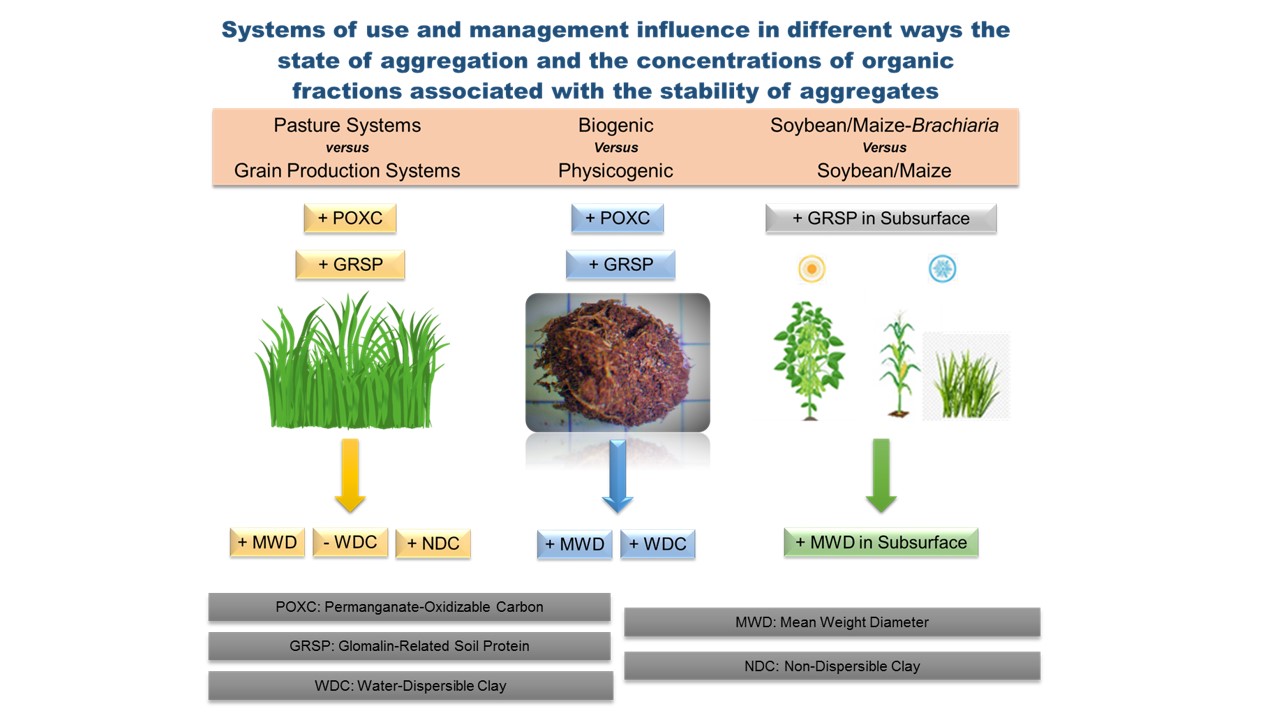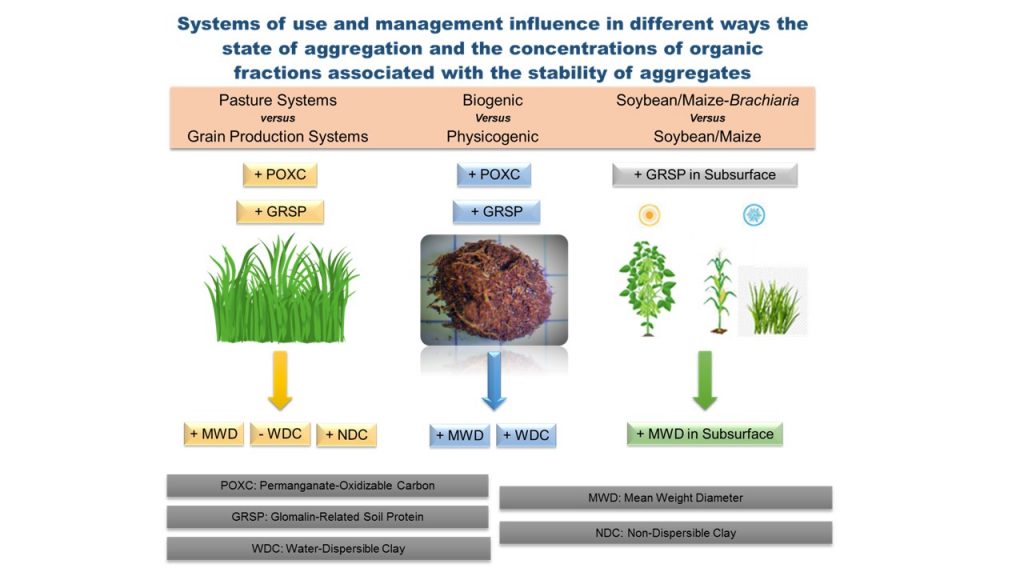Rev. Bras. Ciênc. Solo.2022;46:e0220074.
Stability, labile organic carbon, and glomalin of biogenic aggregates in sandy soils under management systems in the subtropical region of Brazil
21/Nov/2022
DOI: 10.36783/18069657rbcs20220074
Graphical Abstract

Highlights
Pasture systems promoted greater stabilization of macro- and microaggregates.
Intercropping of plant species favors the stabilization of macroaggregates.
Biogenic aggregation provided a higher concentration of labile organic carbon.
High glomalin contents are associated with biogenic aggregates.
ABSTRACT
Soil aggregates and their stability affect a wide range of soil properties. This study aimed to (a) verify whether biogenic aggregation provides higher macro- and microaggregate stabilization, and (b) evaluate whether biogenic aggregates are associated with higher labile organic carbon and glomalin contents. Three management systems were evaluated (permanent pasture, PP; no-tillage system, NT; and no-tillage + Brachiaria system, NT+B) as well as a reference area (Atlantic Forest biome vegetation, NF). According to their origin or formation pathway, the aggregates were separated, identified, and classified as biogenic (formed by biological processes) and physicogenic (resulting from chemical and physical actions). The PP system provided the greatest stabilization of the macroaggregates, regardless of the formation pathway, as reflected by a greater mean weight diameter (MWD). The PP system also influenced the degree of microaggregate stability by increasing the bond strength and reducing the dispersion of the clay fraction. Finally, the PP system elevated the contents of labile organic carbon (POXC), easily extractable glomalin (GRSP-EE), and total glomalin (GRSP-T) under both formation pathways. The NT+B system favored the stabilization of macroaggregates, especially in the subsurface soil layer, compared with the NT area. In the aggregates of the NT and NT+B areas, the highest values observed were for water-dispersible clay (WDC) and the lowest values observed were for non-dispersible clay (NDC), a pattern opposite to that observed in the aggregates of the PP and NF areas. In the biogenic aggregates of all areas, a high POXC content was quantified, and biogenic aggregation proportionally increased the values of MWD, GRSP-EE, and GRSP-T relative to physicogenic aggregation. The results showed that grain production systems, pasture systems, and non-anthropized environments differentially influenced aggregation and the concentrations of organic fractions associated with aggregate stability. This study highlights the need for future studies using these indicators to monitor the quality of soils, especially those with sandy texture, which are considered more fragile.
548

